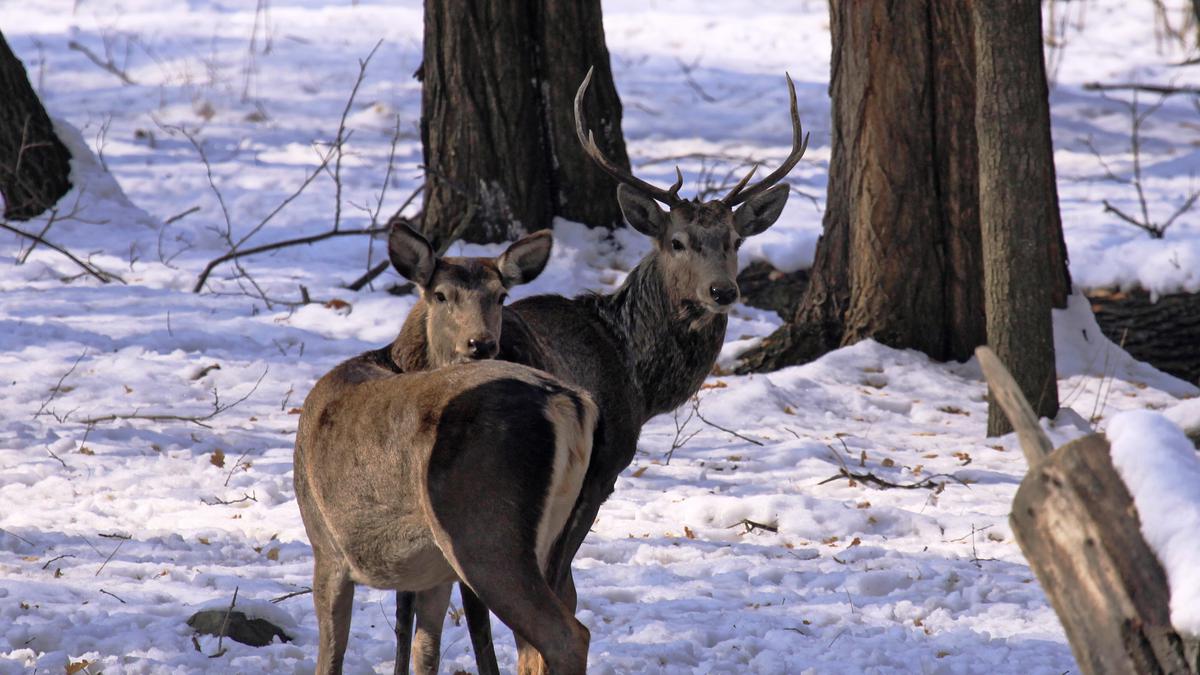
Mating calls of endangered hangul in Kashmir indicate record uptick in population
The Hindu
Hangul, Kashmir's critically endangered deer species, shows promising population growth after successful rutting season, raising conservation hopes.
Kashmir’s highly shy and sensitive animal, hangul, which is enlisted as a critically endangered indigenous species of deer, has reported one of the healthiest rutting or mating seasons in the previous autumn. Experts suggested the roars or calls made by hangul during rutting indicate that their number will cross 300 this spring, the first time in more than three decades.
“The calls recorded by the wildlife staff during the rutting season in October last year were healthy compared to previous years. In fact, the Dachigam National Park, home to hangul, was closed between September 25 to October 18 for visitors to allow unhindered rutting,” Rashid Naqash, Regional Wildlife Warden, Kashmir, told The Hindu.
These calls were recorded from around 25 nallah or drainages in middle and lower reaches of Dachigam National Park, spread over 141 square kilometres, in Srinagar.
A male deer roars and groans during courtship to attract a female deer or hind. The animals keep calling back and forth for half an hour or more, especially during dawn and dusk. Officials sighted a male deer with a larger group of hind and fawns (young deer), “as big as 15” in the autumn.
Since 1947, the population of hangul, which is the State animal of Jammu and Kashmir, witnessed a sharp decline. In 1947, around 2000 were spotted and the number fell to 384 by 1968.
In 1988, the hangul population was estimated to be around 1,000 and fell drastically to 140 to 160 in 1992, as militancy raged in Kashmir and the movement of large columns of security forces and also of militants increased in the area.
The hangul population was estimated at a mere 197 in 2004, touched the lowest of 183 in 2015 and showed a steady increase to 261 in 2021, according to Wildlife department figures.

ACB files case against IPS officer N. Sanjay in Andhra Pradesh. The official is accused of manipulating the tender processes for awarding contract for development and maintenance of AGNI-NOC portal, and conducting awareness meetings for SC/STs. It is alleged that the total value of properties stolen, or involved in the case is estimated at ₹1,75,86,600.










